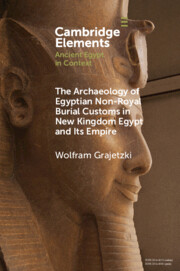From the Adbreviatio artis grammaticae, codex Casanatensis 1086, ff. 1r-11r
An experimental scholarly digital edition of section De nomine (folia 1r-11r) of the Adbreviatio artis grammaticae by Ursus from Benevento from codex Casanatensis 1086 (IX century), edited by Paolo Monella within the ALIM Project (2017).
What you see on this page is the JavaScript visualization of the XML/TEI source code. For more information on the Ursus Project, the full documentation and the source code (including XML/TEI and JavaScript), see the project home page on GitHub.
Click here for a visualization of the table of the signs (graphemes) found in the manuscript (the original CSV file is on GitHub).
Recommended browser: Mozilla Firefox. The page was also tested on Chrome.
Note: Please allow about 10 seconds for the page to load (or to reload after checking/unckecking one of the checkboxes).
Legenda
- The black row below (ꝑtinet, Graphemic Layer) encodes the graphemes.
- The blue row above (pertinet, Alphabetic Layer) encodes the alphabetic letters (alphabemes) represented by those graphemes. In this case, grapheme "ꝑ" (in green) represents the three underlined alphabetic letters "p", "e" and "r".
- The black box appearing when the user hovers a word with their mouse (pertinet: [pertineo] Verbal, II conjug, Active indicative, resent, III singular, Linguistic Layer) unambiguously encodes the linguistic word beyond any spelling or graphical differences, through a combination of lemma (pertineo) and morphology (Verbal, II conjug, Active indicative, Present, III singular).
Start of new folio (hover for folio number, click to see manuscript page image). Note: images are currently unavailable due to copyright restrictions) Abbreviation with superscript abbreviation mark: at the Graphemic Layer the "base graphemes" (the graphemes above which the abbreviation mark is written) and the abbreviation mark itself are red. In this example, the macron spans above both graphems "q" and "m". At the Alphabetic Layer the abbreviated alphabemes are underlined, as for all abbreviation types Start of new column (hover for column number) Abbreviation with abbreviation mark written after the base grapheme(s): purple Start of new line (folio 1r, column 1, line 2) Abbreviation through brevigraph (no abbreviation mark, one specific grapheme only): green Start of source (click to expand) Abbreviation through omission of some graphemes (no abbreviation sign, no specific brevigraph): pink End of source (click to expand) Space between words in the manuscript (at Graphematic Layer): the MS has a space between "et" and "in", and no space between "in" and "aliis" Dropcap Space in the manuscript (at Graphematic Layer) within a linguistic word Larger initial Unclear word (darker shades of gray represent less clear reading) Note on textual criticism Italics in the blue line at the Alphabetic Layer mark nonsensical words (due, in this example, to a gap that makes the word unintelligible) Emendation (for the MS reading, click on the note). Uncertain emendation: the red border indicates that the emendation is still being discussed. Gap (hover for gap extension in characters or words and for reason) Note on the content Quotes in the blue line mark groups of alphabemes (not actual linguistic words) Note on the source Small caps in the blue line mark Greek words, ancient abbreviations ("gn" for "Gnaeus") and Roman numerals ("xxxiiii" for 34) Note on the script, on glyphs with no graphemic value (e.g. allographs) or on the digital reproduction of the manuscript Section heading (not present in the manuscript, added by the editor) Note on technological issues Text or graphemes ("in") written in the interlinear space
This work is licensed under a Creative Commons Attribution-ShareAlike 4.0 International License.




-1.jpg)






